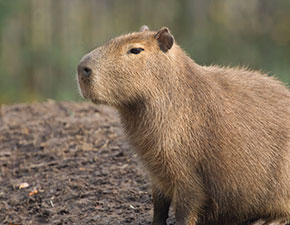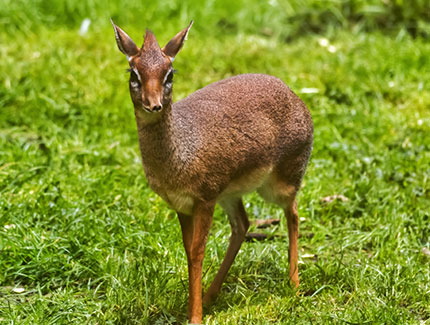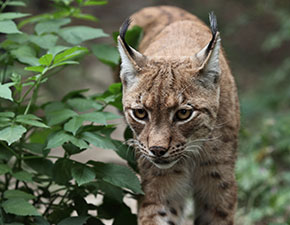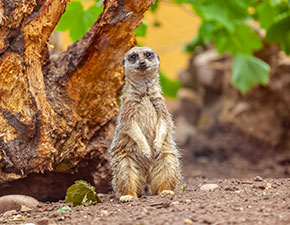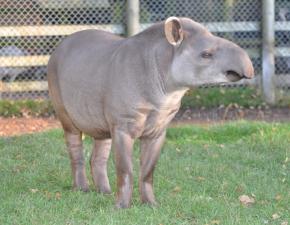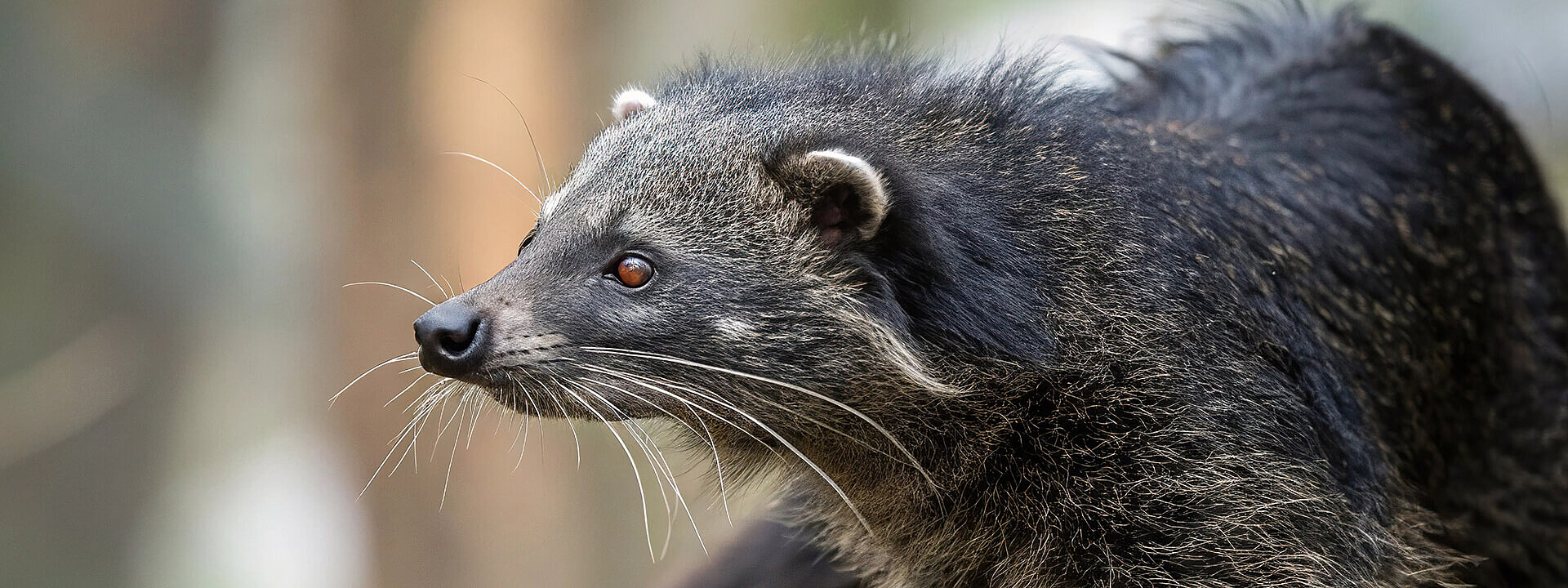
Binturong
Arctictis binturong
IUCN red list status:
Vulnerable
For more information, please visit iucnredlist.org
Considered frugivores, as they mainly consume fruit. But will also eat other animals such as small rodents, birds and insects.
Widespread in south and south-east Asia, such as Nepal, Bangladesh, India, China and two islands of the Philippines.
Up to 18 years.
They will typically have between one to three offspring, with a gestation of 92 days.
Binturong
Binturongs are commonly called a 'bearcat' due to their appearance. But they are neither a bear or cat and are actually the largest member of the Viverridae family, which include civets, linsangs and genets. Binturongs are excellent climbers, they have a prehensile tail that serves as a fifth limb that helps them grab onto branches and tree trunks. Although they are pretty decent climbers, they are not as agile as other arboreal species, due to their size and weight and are not able to leap from tree to tree. Instead they must descent to the ground to go from one tree to another by moving across the forest floor. Binturongs can do this by rotating their hind paws and gripping onto the tree as they walk down the trunk face-first. They also have the aid of their semi-retractable claws to sink into the bark for extra grip.
Binturongs are mostly solitary and will evdade other binturongs in the area, except for mating. There is very conflicting research regarding whether this species is nocturnal or crepuscular, so they are classed as 'arrhythmic', meaning they have no pattern and can be active at random times of both day and night. They will spend most of their time hidden in the canopy of the tropical rainforests of South and South-east Asia, and will consume a varied diet from small rodents and birds to insects, plants and fruit. Research shows that binturongs are known for dispersing the seeds of the fruits they eat and playing an important ecological role in their ecosystem.
Binturongs will have between one to three offspring, which are called 'binlets'. They are known to undertake courtship within the canopies year-round, but have delayed implantation to allow them to have young when food is in abundance.
Binturongs are classed as Vulnerable on the IUCN Red List and are considered rare throughout their natural range. Their population is threatened by habitat loss, degradation and fragmentation from logging and agriculture. In some parts of Asia binturongs are also poached and sold into the pet and medicine trade or killed for their meat and fur. They are also expolited just like civets to produce coffee, known as 'Kopi Luwak'. Once captured binturongs and civets are force-fed coffee cherries to produce the most expenisve and rare coffee in the world at the cost of their welfare and conservation.
At DMR we support The Civet Project who engage local farmers in Vietnam and raise awareness among consumers about the cruel practices associated with Kopi Luwak and advocate for policy change.
Did you know?
Like other Viverrids they have powerful scent glands at the base of their tails. These scent glands are used to spread pheromones and comminicate with other binturongs, but unlike other species their secretions are known to smell like buttered popcorn!
